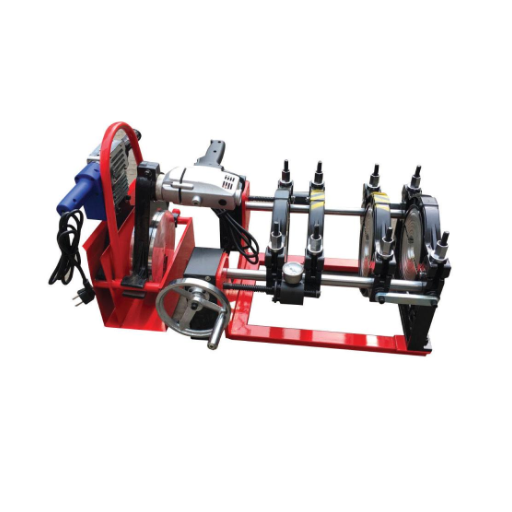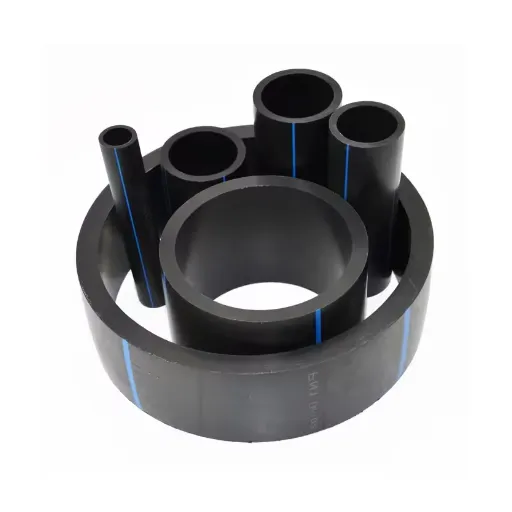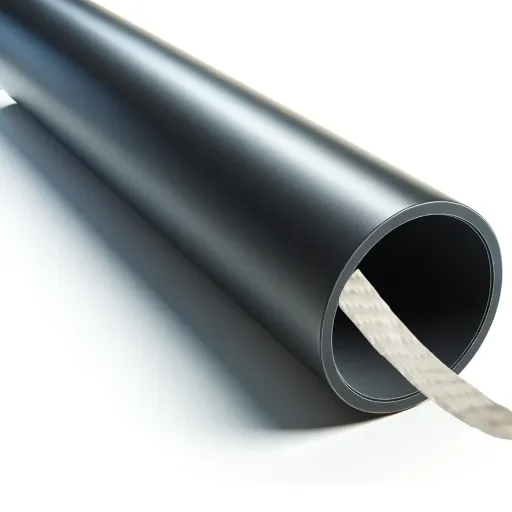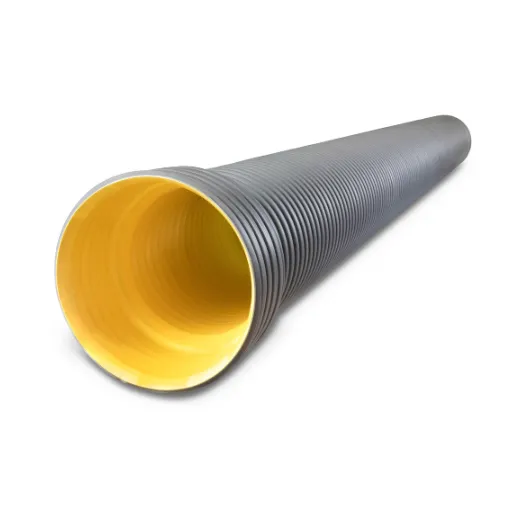High-density polyethylene (HDPE) pipes have become a critical component in modern infrastructure development due to their durability, flexibility, and resistance to corrosion. The production of these pipes relies on advanced pipe-making machines designed to meet stringent industrial standards while ensuring efficiency and sustainability. This guide explores the intricate process of HDPE pipe manufacturing, focusing on the cutting-edge machinery that drives this industry forward. From understanding the mechanics behind extrusion and calibration to examining the latest technological innovations, this article provides a comprehensive framework for professionals and enthusiasts seeking insights into the future of pipeline infrastructure. Whether you are an infrastructure developer, a manufacturer, or an engineer, this guide aims to deliver an authoritative overview of HDPE pipe-making technology and its pivotal role in revolutionizing global infrastructure systems.
What is an HDPE Pipe Machine, and How Does It Work?
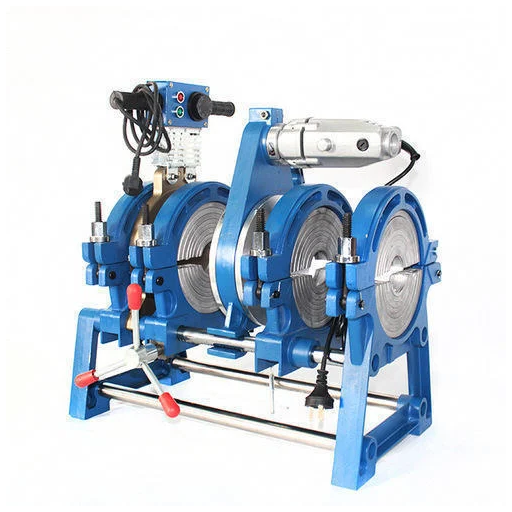
Understanding the Basics of HDPE Pipe Production
The process for producing HDPE pipes begins with sophisticated methods, one of which primarily revolves around extrusion. Adjustable temperatures of 200°C and 260°C, depending on the HPDE grade, allow for controlled heating and melting of the high density polyethylene resin pellets. High pressure is then utilized to force the molten material through a die which shapes the pipe’s wall thickness and diameter. Following the die exit, the cooled pipe moves through a vacuum calibration tank that subsequently solidifies it while retaining the desired dimensions.
- Extrusion Temperature: 200°C to 260°C, modified according to the resin properties.
- Vacuum Pressure in Calibration Tank: 0.05 to 0.09 MPa to guarantee proper shaping.
- Pipe Wall Thickness Control: ±0.1 mm tolerance to meet critical pressure applications.
- Cooling Water Temperature: Ranging between 15°C and 25°C for adequate solidification.
Sequentially monitored steps guarantee that the end results for the HDPE pipes is compliant with industry standards such as ISO 4427 or ASTM F714 tailored for specific uses. These checks help ensure the pipes are of maximum durability, corrosion-resistant and can thus be universally applicable in numerous infrastructure systems.
The Role of Extrusion in Pipe Manufacturing
Extrusion is one of the major steps in the production of HDPE pipes, as it ensures a uniform and effective technique for converting a simple polymer material into a finished pipe. Execute extrusion by feeding HDPE pellets into a heated barrel, which melts the pellets in a controlled environment ranging from 180°C to 240°C. The liquid polymer is then forced through a die, which defines the shape of the pipe, including its height and thickness.
- Extrusion Head Pressure: Continuously remains within a range of 10 MPa to 25 MPa to guarantee adequate flow and good shaping.
- Screw Speed: Set between 40 RPM and 100 RPM, depending on the pipe diameter, for a defect free extrusion.
- Die Temperature: Controlled between 200°C to 230°C to achieve proper orientation of the material while minimizing its degradation.
The justification for these factors is that they preserve the structural integrity of the pipe while complying with global standards. The sequence operates in strict control of quality, which includes quantity controls and dimensional and cooling rate supervision to guaranteethat every pipe satisfies industry standards and customer expectations.
Key Components of a Pipe Extrusion Machine
- Extruder: The extruder is the most important part because it melts and mixes the polymer material. A screw, barrel, and heating zones make up the unit. The barrel receives the polymer material at temperatures ranging from 200°C to 230°C, which is adequate for melting the polymer material to achieve the desired melting without degrading it. The type of screw design, either single-screw or twin-screw, depends on the material type and the required throughput.
- Die Head: The die head is used to give the pipe the intended shape by forcing the molten polymer through the die at a certain temperature. Accuracy of the die is very important for accuracy of the dimensions, and tolerances are often dependably limited to ±0.2 mm according to the standard.
- Cooling System: The pipe flows into the cooling system after flowing out the die. To quickly solidify the polymer, this often incorporates an air-cooling unit or a water bath. The rate at which it cools is controlled and monitored closely to avoid warping and other structural defects.
- Vacuum Calibrator: The calibrator maintains the constant diameter and roundness of the pipe. It controls the measurement of internal pressure of the pipe; it uses -0.05 MPa to -0.09 MPa of internal pressure for pipes of certain sized to maintain pressure.
- Haul-Off Unit: This part of the system uniformly and consistently pulls the extruded pipe to avoid stretching or compression. The haul-off unit’s speed is matched to the other components’ speed to achieve accuracy in the production process.
- Cutting Unit: The unit that sequentially divides the continuous pipe into segments of arbitrary lengths is referred to as the cutting unit. Tools like rotary cutters are set up to sever the pipe at precise points while ensuring the ends of the pipe are left uncompromised (no burrs).
- Control Panel: The control panel combines the previous sections with PLC (Programmable Logic Controller) systems, enabling the complete supervision and intervention over the operation of the device.
The extrusion process for pipes, when combined with measures to control the temperature, speed, and power intensities, guarantees the output will meet the set quality as well as the required technical and industrial standards.
Why Choose HDPE Pipe for Your Projects?

Advantages of Using HDPE Pipes Over Other Materials
HDPE (High-Density Polyethylene) pipes appear to be the best option because of their unique technical and operational features. First, their notable mechanical strength and corrosion resistance make them suitable for long-term use, even in chemically hostile applications. Compared to traditional systems using materials like steel and concrete, HDPE pipes have the advantage of not rotting due to water, chemicals, or ultraviolet radiation exposure.
Second, their lightweight construction and flexibility enhances ease of transport and installation, which, in comparison to other materials, lowers labor and equipment costs significantly. As an example, HDPE pipes are flexible and deformable, which makes them ideal for trenchless installation techniques such as pipe-bursting or horizontal directional drilling.
In addition, HDPE pipes have exceptionally high resistance to internal pressure and a high value of stress crack resistance (SCR) with a long life expectancy of over 50 years when properly maintained. Common technical features are maximum working pressure up to 16 bar (depending on pipe diameter and wall thickness) and temperature from -40°F to 140°F. These features show the versatility of these pipes in various applications: water distribution, gas distribution, and industrial fluid transportation.
At last, HDPE combines low costs with virtually no required maintenance. The smoothness of the interior surface minimizes frictional losses, enabling fluid to flow freely and saving energy. The unique blending of engineering dependability, economic savings, and cost efficiency make HDPE pipes the best choice for many different uses.
Applications and Benefits of Plastic Pipe Solutions
Due to their excellent performance traits, plastic pipe solutions have many uses across industries. For example, in water distribution systems, plastic pipes such as HDPE and PVC perform best because of their lightweight nature, high impact strength, and corrosion resistance. For example, HDPE pipes have the ability to endure pressures of up to 16 bar (depending on SDR rating) and have great resistance to UV radiation, making them ideal for underground and aboveground use.
Next, in gas distribution, plastic pipes offer reliability and safety. Materials such as polyethylene provide flexibility and resistance to stress cracking. Typically, pipes are graded with standards such as PE80 or PE100, which guarantee sustained operational pressure and extreme temperatures.
Last but not least, in industrial fluid transportation, plastic pipes are used with abrasive slurries and aggressive media. PVC pipes, for instance, are smooth on the inside, which prevents loss of pressure and energy over time. These characteristics are complemented by low thermal conductivity, making plastic pipes energy efficient for cold and hot fluids. Replacing these pipes is also economical because they resist chemical reactions from acids and bases.
The advantages comprise an increase in service life (50+ years given correct usage), simple installation because of low weight, and lowered maintenance expenses. This set of technical strengths guarantees effectiveness and lasting financial benefits for a wide variety of uses.
How to Select the Right Pipe Extrusion Machine for Your Needs?

Factors to Consider in a Pipe Production Line
While assessing a pipe production line, I focus on some essential aspects that guarantee maximum efficiency and effectiveness while meeting specific production requirements.
- Material Compatibility: First, I pinpoint the type of polymer being used, which could be PVC, HDPE, PPR, or LDPE. This is important so the extruder and die head are matched with the material since different materials need different processing temperature and also different screws.
- Production Capacity: I determine the required input and output of the pipe mill in kg/hour or meters/minute, depending on the application. For example, pipes extruding lines with an extruder output ranging between 200-500 kg/h are normally suitable for the middle-range applications. Some other applications need higher output as well, and that is industrial production.
- Screw and Barrel Design: I check if the screw configuration (single or twin-screw) is appropriate to the material. For instance, twin-screw extruders are good for using PVC because of the superior mixing and heating control features of the device.
- Pipe Dimensions and tolerances: The line should have the capability to reach the target pipe diameters, which includes ranges such as 16 mm to630 mm, and be able to maintain close accurate tolerances such as those set forth by ISO 4427 for HDPE pipes.
- Energy Efficiency: The evaluation of power consumption for space heating, cooling, as well as for the heaters’ drives is done in my area of focus. Most modern pipe production lines are equipped with high-efficiency motors employing inverter technologies, which helps in energy saving.
- Automation systems and monitoring: Real time monitoring and control of the temperature, pressure, and the puller’s speed require Advanced Method Control Systems (MCC systems PLC or SCADA).
- Cooling Systems: I make sure that the water cooling tank is of sufficient volume and other design features for pipe calibration and cooling, which is crucial for dimensional accuracy.
- Space and Layout Requirements: Finally, I look at the design of the factory and the available space because the length of the assembly lines can be as long as thirty meters or more.
After all these factors and their related design specifications have been analyzed, an appropriate pipe production line can be selected with confidence that it will function as intended and within the budget.
The Importance of Machine Manufacturer Reputation
Reputation is key when choosing a manufacturer, especially in terms of pipe production, as it affects how reliable the machine will be and how well it will perform over time.
- Flexible Tolerance: Making certain that the machines can deliver dimensional accuracy of ±0.1 mm, which is very important in high-performance pipes.
- Line Speed Capacity: Checking the capacity of the production line to 10-30 m/min without compromising about production targets.
- Energy Efficiency Standards: Ensuring that power consumption meets the set limits ,usually ≤20 kW/ton of production
- Material Compatibility: Making sure that the machine is designed for the materials I would like to process like PVC, PP, or HDPE.
Reaching out to manufacturers who are reputable manufacturers helps me avoid risks such as breakdowns, poor output, and insufficient backup, helping me maximize production properly in terms of both efficiency and product quality.
Exploring the Pipe Extrusion Line Process
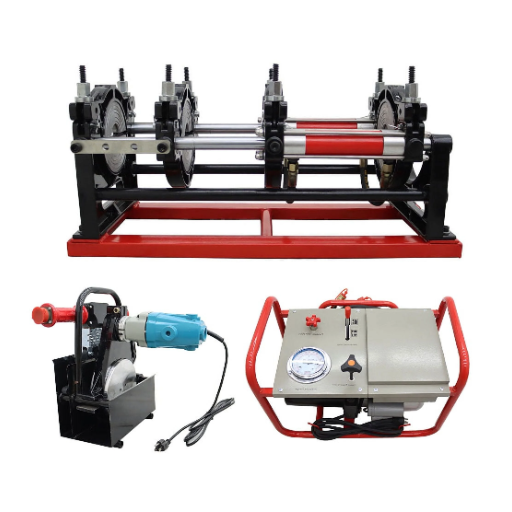
Understanding PVC Pipe Extrusion Techniques
- Energy Efficiency: Yes, it is important to abide by energy usage caps of ≤20 kW/ton of output. This, in addition to guaranteeing savings, is a requirement in energy management for modern extrusion systems.
- Material Compatibility: I affirm that the machine must cater to the materials I wish to process, PVC, PP, HDPE. Without this form of compatibility, problems like inadequate melting, wear and tear on the screw or barrel, and undesired output quality arise.
- Manufacturer Reputation: It is completely necessary to choose reputable manufacturers. This assures dependable machinery, lowers the chances of regular breakdowns, guarantees adequate post-purchase servicing and spare parts support that is vital for sustaining production and quality over time.
Regarding these technical requirements I have set, I can manage the functionality and efficiency of the extrusion line together with operational risks.
The Role of Extruder Machine in Production
The extruder machine is an important resource in production, especially with the creation of goods from the plastic, food, and chemical industries. It works on fully transforming materials by heating, shearing, and applying pressure to transform it into a singular, moldable object. The machine guarantees the use of raw materials into the intended final good with a constructor’s specification accuracy and automatic controllable constancy, which allows accomplishing quality and efficiency in meeting product goals.
- Screw Diameter and L/D Ratio (Length-to-Diameter): Defines the portion of time material is outputted per minute and the degree of blending undergone. Typically, a greater L/D ratio (e.g., 20:1 or 30:1) accepts better mixture and melting levels.
- Screw Speed (RPM): It dictates the shearing rate and quantity of material produced. Production can be increased by turning the motor faster, though this must go hand-in-hand with the thermal characteristics of the material to avoid deterioration.
- Temperature Control: The accuracy of barrel zones is crucial for preventing degradation of the material or achieving homogeneity. Different zones vary with the material being processed, with the least being 100°F and the highest ranging almost 600°F.
- Output Torque: The strength of the motor determines the degree of material viscosity or density they can work on. An appropriate level of torque is useful for screw wear and breakage avoidance during working operation.
- Throughput Capacity: This functionality evaluates the output of the extruder in terms of weight per hour. The result must meet the regulations and standards while attempting to save energy at the same time.
- Die Configuration: The style of the die determines the profile of the extrusion and therefore affects the quality of the resultant product.
With these material specific parameters and production requirements, the extruder can ensure dependable performance, productivity, and efficiency in meeting the productions objectives. These details are also crucial in reducing the amount of time the machinery is inactive, mitigating the chances of problems occurring and prolonging the life of the machine.
How to Troubleshoot Common Issues in Pipe Extrusion Machines?

Maintenance Tips for Prolonging Machine Life
To enhance the efficiency and durability of a pipe extrusion machine, maintenance must be done systematically over a period of time.
- Cleaning: At the end of every production cycle, ensure that the barrel, screw, and die head are cleaned adequately to avoid material stagnation that can result in wear and tear as well as variances. Employ the use of recommended cleansing kits, and avoid abrasive tools that are capable of damaging essential components.
- Operating Temperatures: The temperature profile of the extruder must be observed continuously in order to confirm that it meets the material requirements. For instance, polyethylene needs a heating zone range of 180°F to 300°F, and for PVC, it needs to be around 300°F to 400°F. Mechanical failure or degradation could be caused by excessive temperature variation.
- Lubrication: Lubricating moving components such as bearings, gearboxes, and other spine pieces needs to be done often in order to reduce friction. The lubricating agent needs to be of great quality and performance grade to be able to withstand the operational loads and heat.
- Checking Screw and Barrel Wear: Check the clearance with a feeler gauge or micrometer to ascertain the degree of wear on the screw and barrel. If the gap is larger than the manufacturer set thresholds (standard production, 0.1- 0.2mm), repairs or replacements will be needed.
- Verify Alignment: Components that are misaligned may cause inconsistent product output and damage the machinery. Check alignment with precision laser tools or dial indicators during setup.
- Electrical Connections and Sensors: Routinely check every electrical unit, including control panels, heaters, and thermocouples, to look for defects. Maintain voltage within +/- 10% of the rated value to ensure stability for sensitive electronic parts.
Following these measures allows me to save time and protect against unnecessary component failure while enhancing the reliability and productivity of my machinery.
When to Contact a Supplier or Technician
When problems emerge that are beyond intrinsic self-service or those that require outside help, a supplier or a skilled technician ought to be contacted.
- Voltage Tolerances: For voltage that goes beyond the tolerable limits of plus or minus 10% of the rated voltage does not allow the tolerant margins of around. Precautionary measures should be taken to avert failure of the delicate electronic components. Oftentimes, such conditions are described by malfunctioning joggers or alarms from the controlling systems.
- Persistent Faults In Control Circuit Panels or Sensors: Control panels, thermocouples, heaters, or other elements do repeatedly trigger faults, with “failure” lit, even when their calibration and performance tests were made. Such phenomena could be IF “SET” and meanings might be working malfunctioning to modules or lower level hardware.
- Unjustified Drop Of Performance Or Working Efficiency: In a case where the extrusion speed is likely lower than the prescribed normal value, the heating of the metal, the pressure, and other values indicate that the efficiency of the furnace on heating or simply pull the furnace down to ground.
- Strange Sounds or Tremors: There are extremes of these conditions such as mechanical jolts, abnormal shakes, such as wheezing, clanking noise, or inordinate shudders which may suggest some motor bearing misalignment or some internal error like motors defects or sometimes burning of the motors resulting it cooling the inductive power to where they burst.
If the error codes, operational history, and results from previous tests are provided, the supplier or technician can diagnose and provide solutions in the most efficient way possible.
Reference sources
Frequently Asked Questions (FAQs)
Q: What are the main components of an HDPE pipe-making machine?
A: An HDPE pipe-making machine typically consists of a pipe extruder, a cooling system, a vacuum calibration tank, a haul-off machine, a cutting machine, and a stacker. These components work together to produce high-quality HDPE pipes.
Q: How does a single screw extruder function in the HDPE pipe extrusion process?
A: A single screw extruder works by melting plastic raw material, usually in the form of pellets, and forcing it through a die to form the desired pipe shape. The screw’s rotation within the barrel generates heat and pressure, which melts the plastic and facilitates its extrusion.
Q: What advantages do HDPE pipe-making machines offer for conduit pipe production?
A: HDPE pipe-making machines offer several advantages for conduit pipe production, including high efficiency, durability, and resistance to corrosion and chemicals. They are also capable of producing a wide range of pipe diameters and thicknesses, making them versatile for various applications.
Q: What is the role of a vacuum calibration tank in a pipe extrusion line?
A: In a pipe extrusion line, the vacuum calibration tank is crucial for shaping and cooling the extruded pipe. It uses vacuum pressure to draw the pipe against the calibration sleeve, ensuring the pipe maintains its correct dimensions while cooling uniformly.
Q: How do fully automatic HDPE pipe extrusion machines enhance production efficiency?
A: Fully automatic HDPE pipe extrusion machines enhance production efficiency by reducing manual intervention, minimizing human error, and allowing for continuous production. Automation ensures consistent quality and increases overall output.
Q: What are the benefits of using a PVC pipe extrusion machine compared to other plastic pipe extrusion methods?
A: PVC pipe extrusion machines offer benefits such as lower material costs, ease of processing, and excellent chemical resistance. They are well-suited for producing pipes used in water supply, drainage, and electrical conduit applications.
Q: Can a pipe extruder machine handle different types of plastic materials?
A: Yes, a pipe extruder machine can be configured to handle different types of plastic materials, such as HDPE, PVC, PPR, and PP, by adjusting the extruder’s screw design, temperature settings, and die configurations to suit the specific material properties.
Q: What factors should be considered when selecting an HDPE pipe extrusion machine?
A: When selecting an HDPE pipe extrusion machine, consider factors such as the desired pipe diameter range, production capacity, machine automation level, energy efficiency, and the manufacturer’s reputation for quality and reliability.
Q: How does a cutting machine contribute to the HDPE pipe production process?
A: A cutting machine is essential in the HDPE pipe production process as it accurately cuts the extruded pipe to the desired length, ensuring uniformity and precision in the final product. This step is critical for maintaining quality standards and meeting customer specifications.



